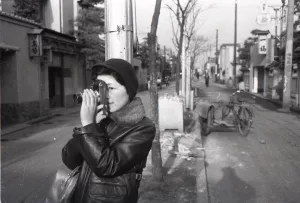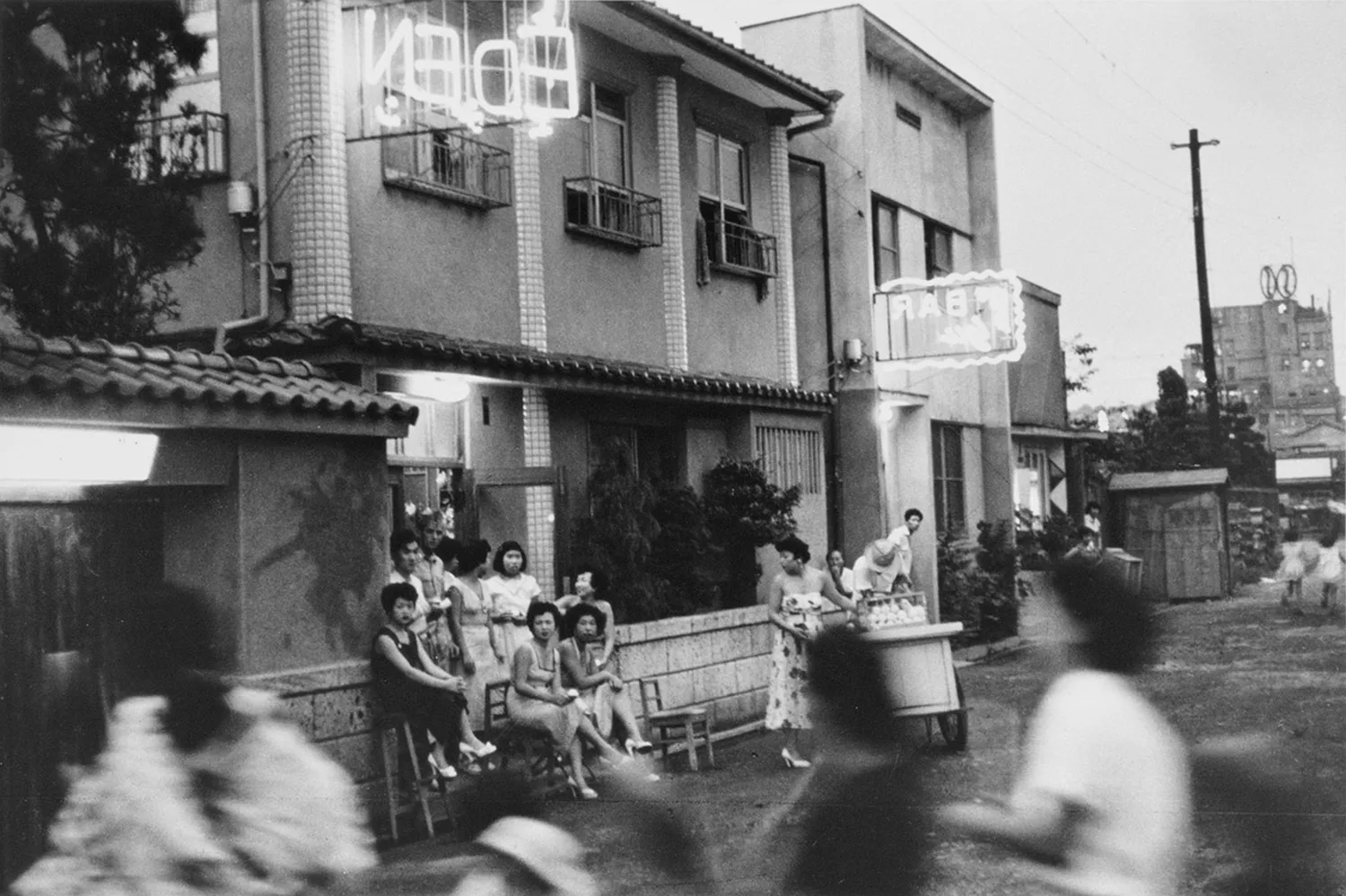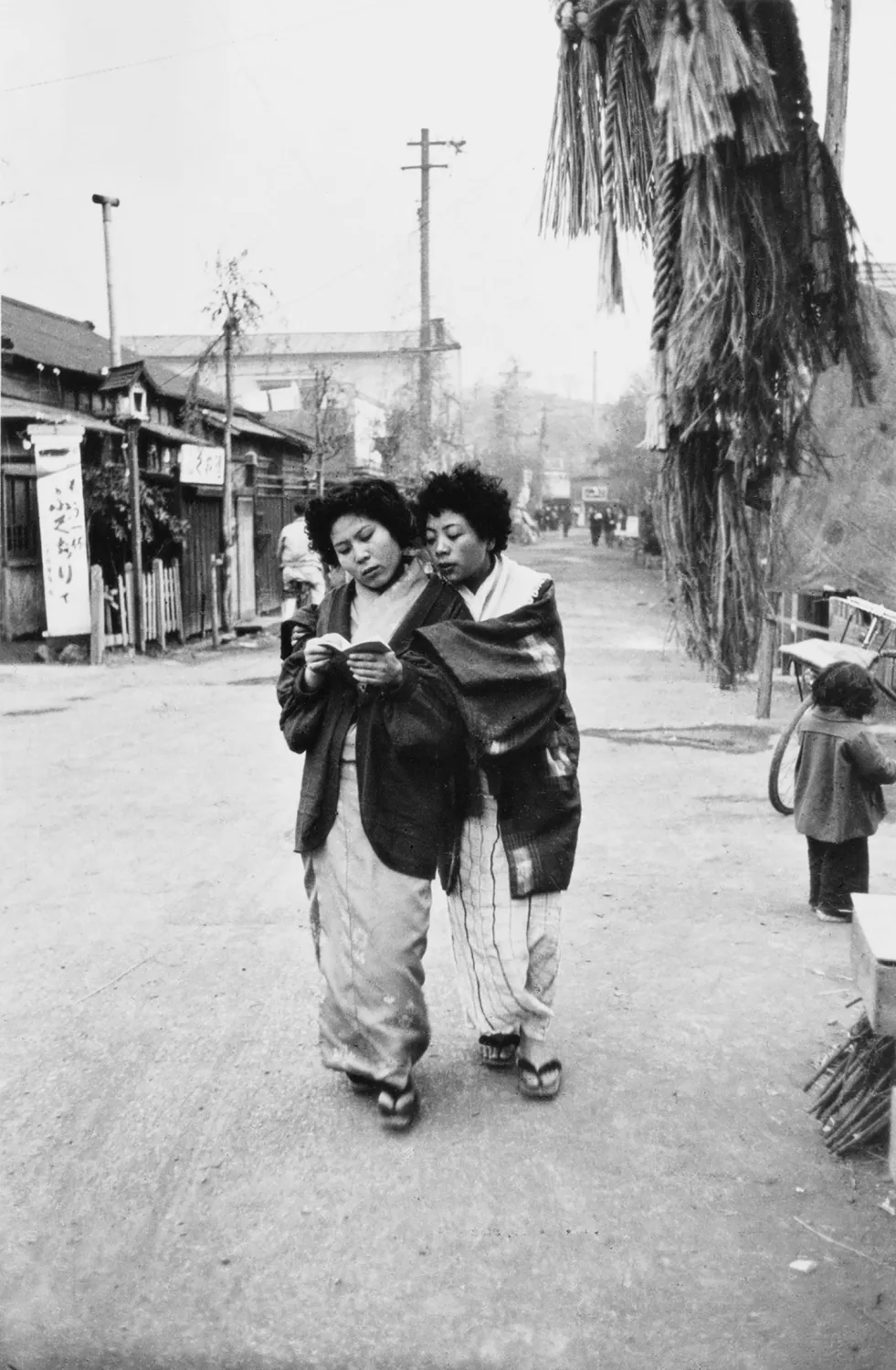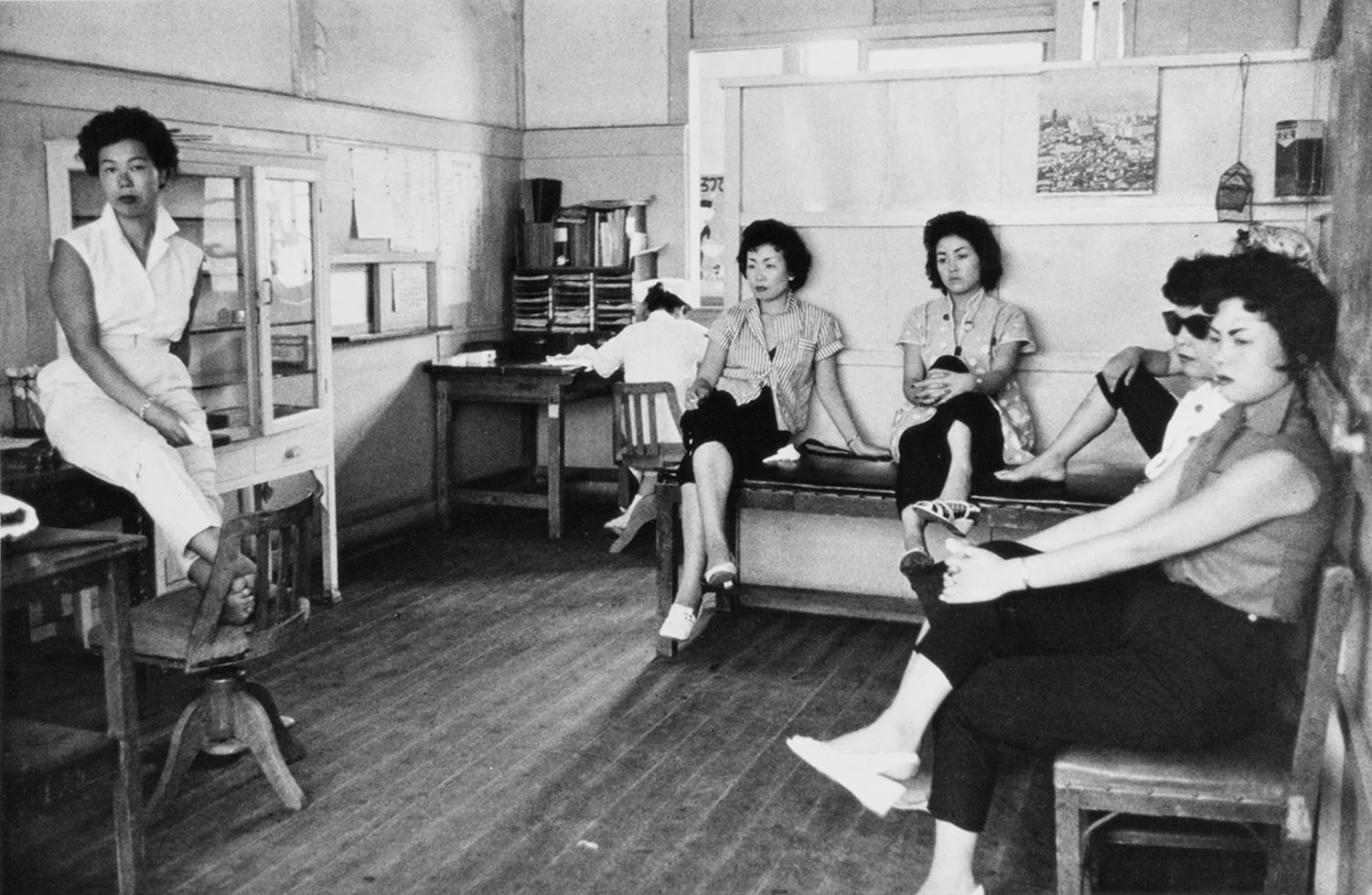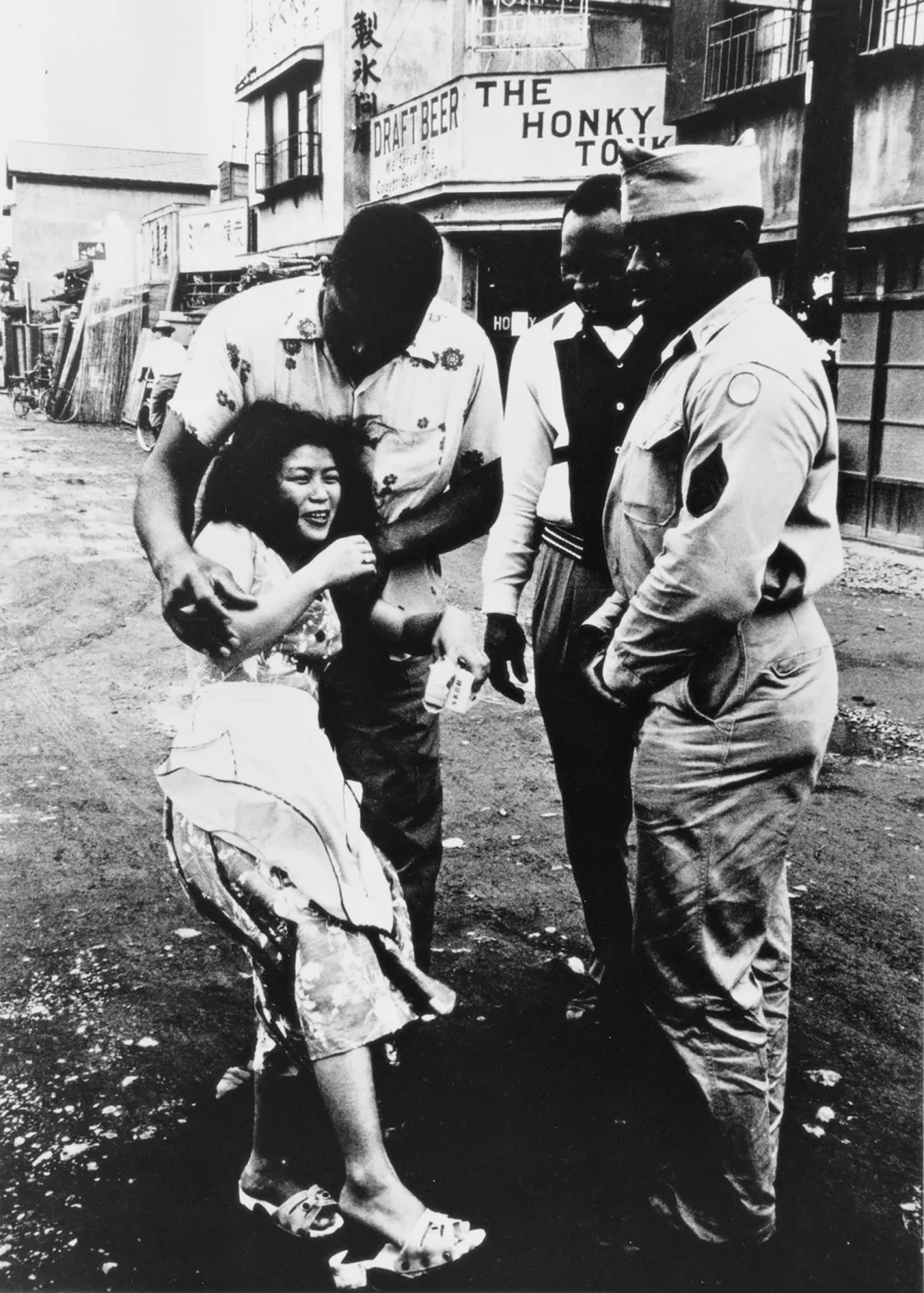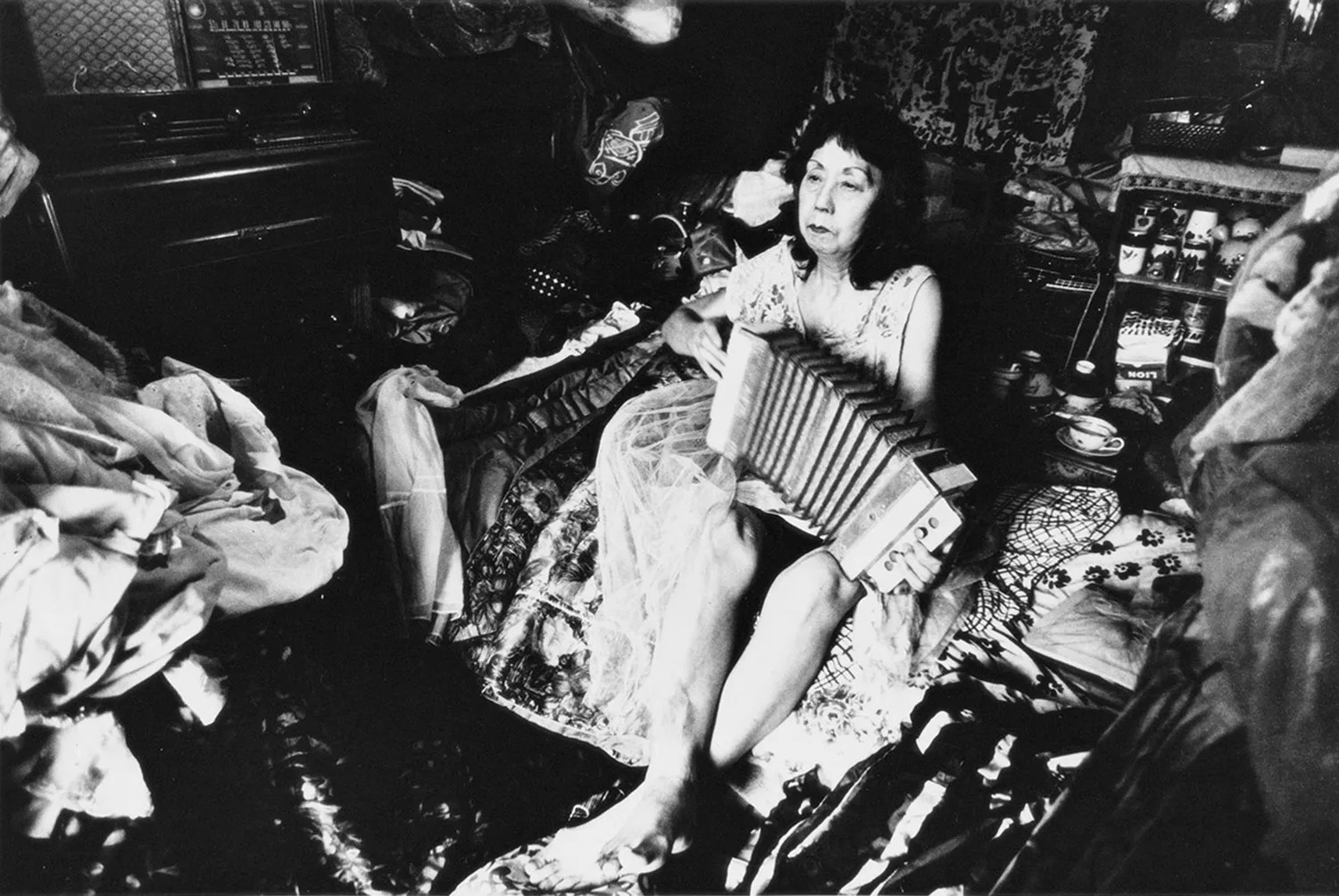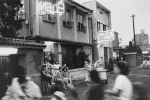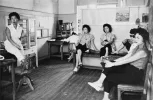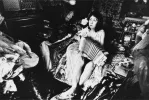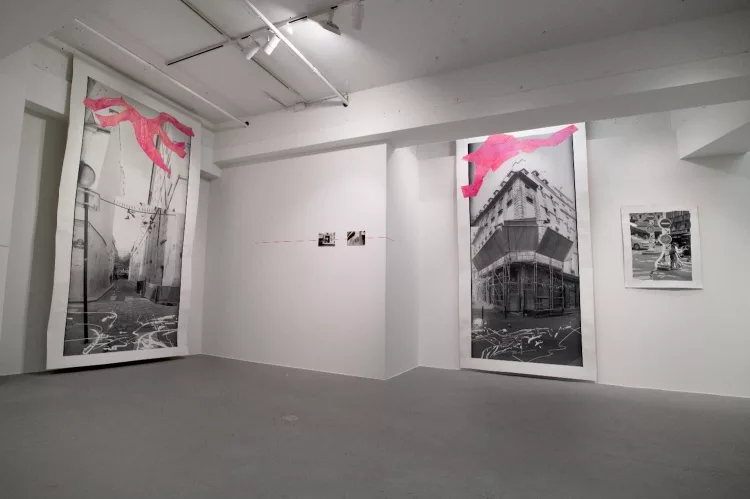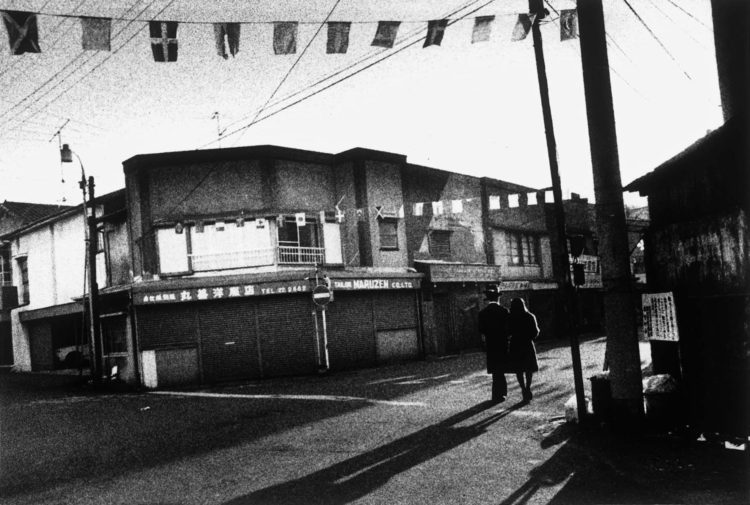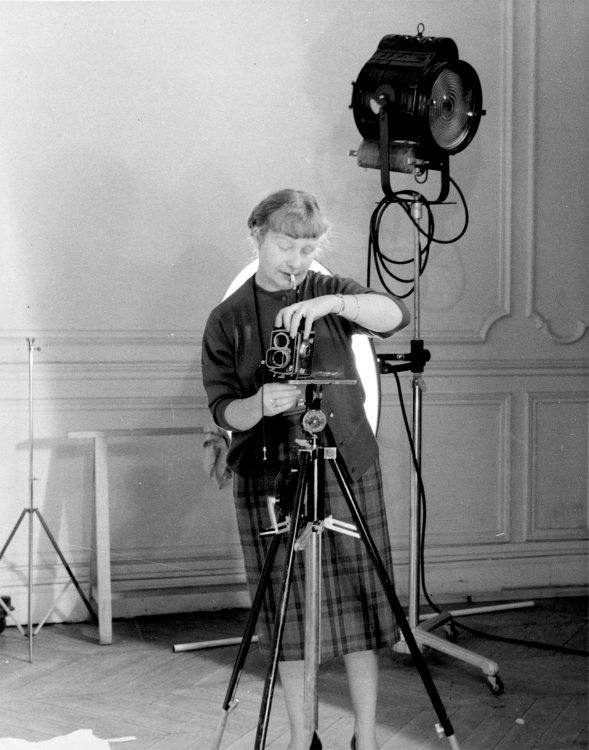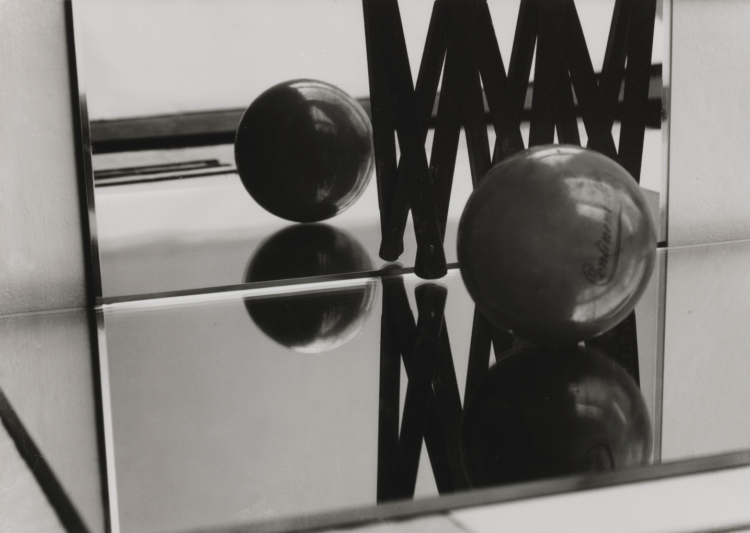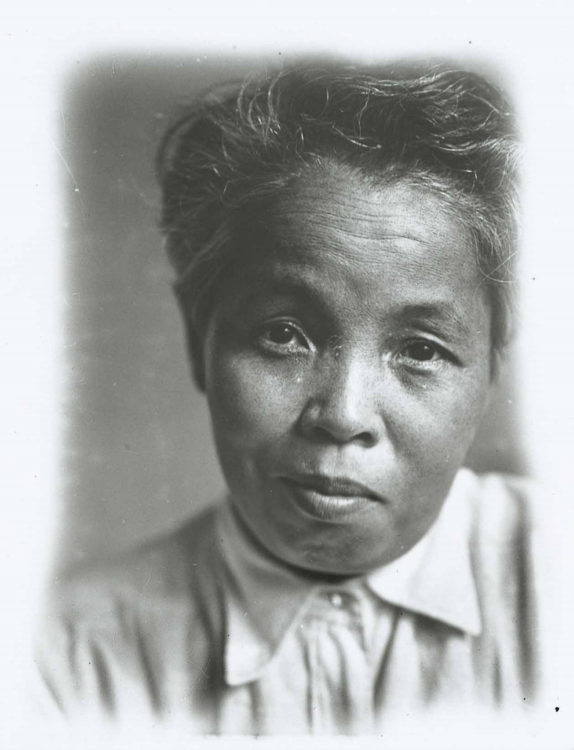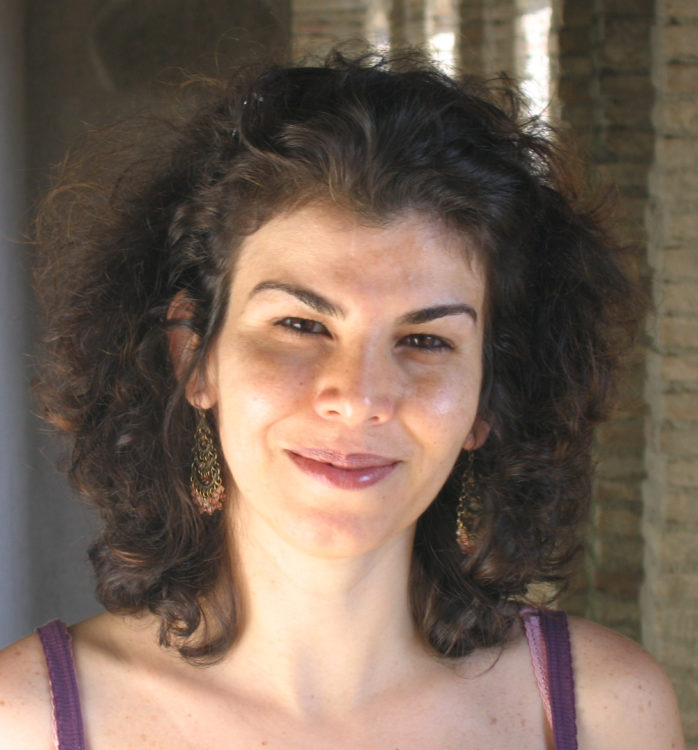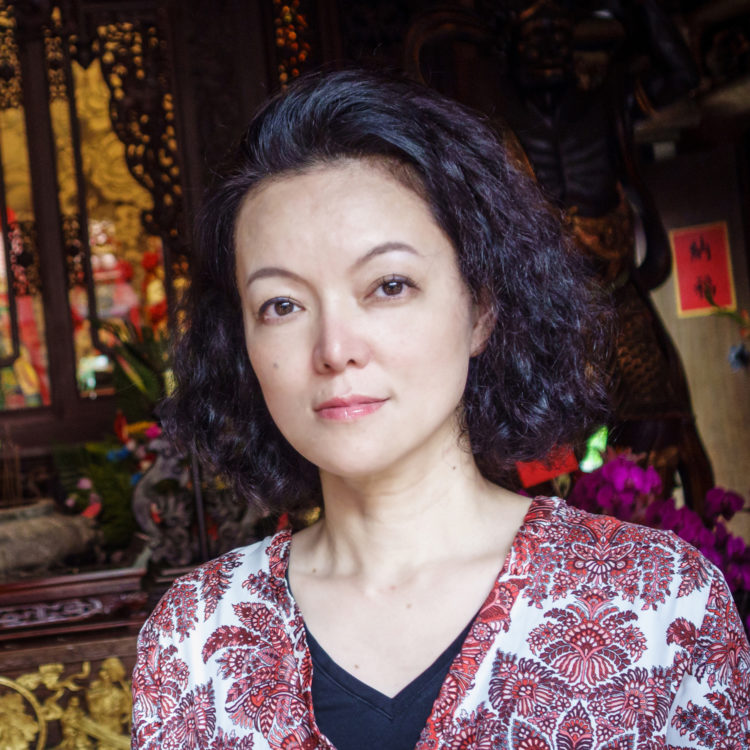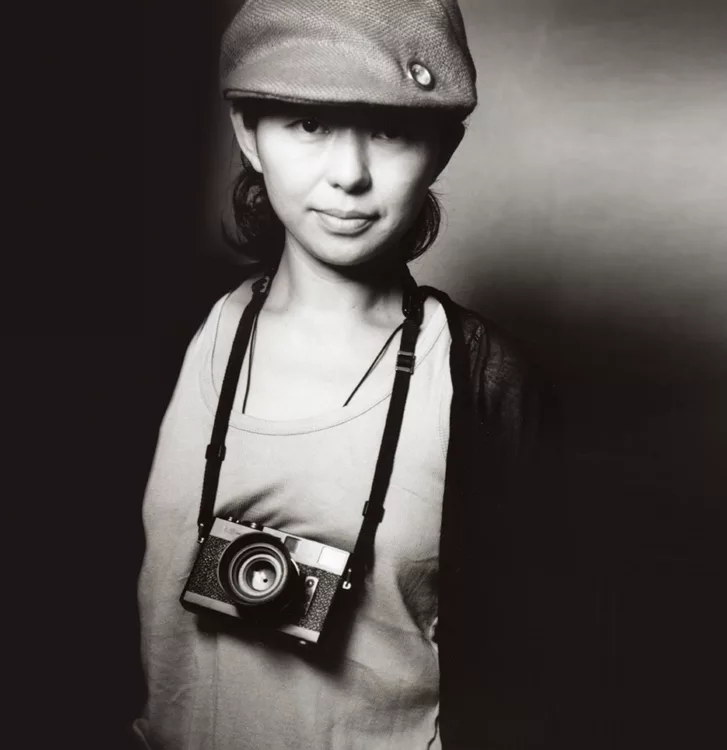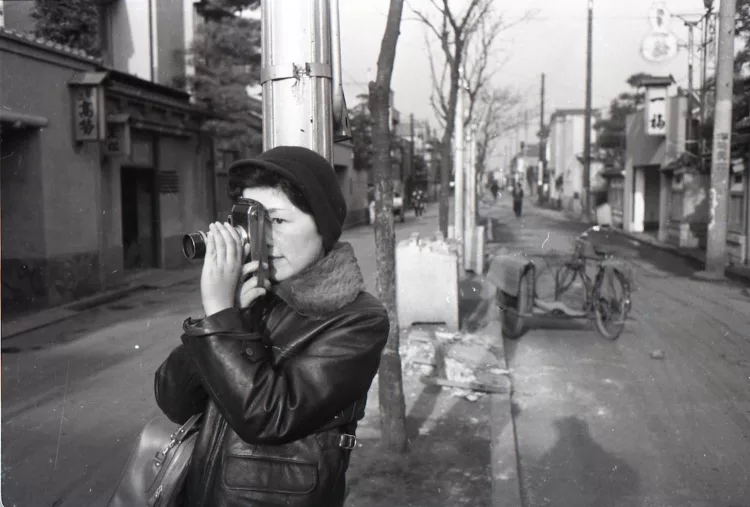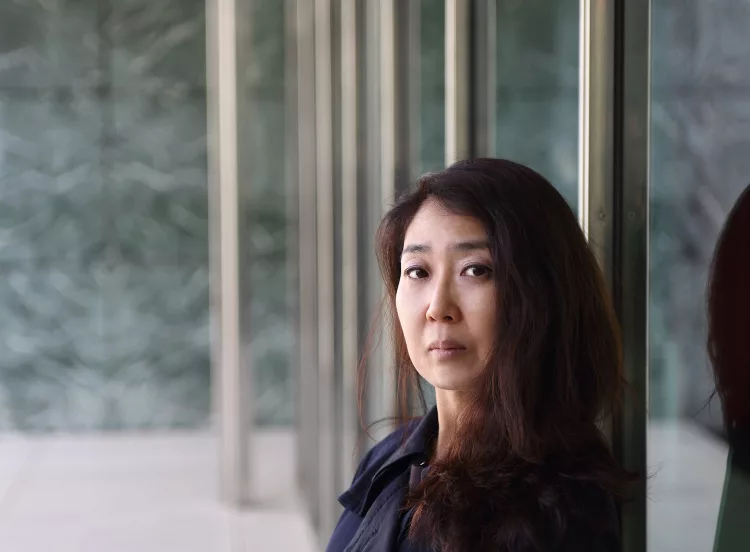Toyoko Tokiwa
Watashi no naka no Yokohama densetsu, 1954–1956: Tokiwa Toyoko shashinshū [The Yokohama Legend Within Me, 1954–1956: A Collection of Photographs by Toyoko Tokiwa], Edited by Okai, Teruo, Yokohama, Tokiwa Toyoko Shashin Jimusho, 2001
→Yokohama saiken: Futari de utsushita haisen sutōrī sengo 50-nen [Recreating Yokohama: Stories of Defeat Photographed by Two People, Fifty Years After the War], Edited by Okumura, Taikō, and Toyoko, Tokiwa, Tokyo, Heibonsha, 1996
→Tokiwa, Toyoko, Kiken na dokubana [Dangerous Poisonous Flowers], Tokyo, Mikasa Shobō, 1957
Living in Postwar Yokohama: Taikō Okumura/Toyoko Tokiwa, Museum of Yokohama Urban History, October–December 2018
→Photography 1955–1965: Independent Images, Yamaguchi Prefectural Museum of Art, November–December 1991
→Working Women, Konishiroku Photo Gallery, Tokyo, April 1956
Japanese photographer.
Toyoko Tokiwa was born in Yokohama. She graduated from Tokyo Kasei Gakuin University in 1950, after which she went to work for a local news agency as a presenter. Around this time, a chance meeting with photographer Taikō Okumura (1914–1995) set her on the path to becoming a photographer herself. She joined a number of amateur photography clubs, including the Shirayuri Camera Club, and took courses in photographic techniques.
Initially, T. Tokiwa photographed the lives of people around the port of Yokohama, but from 1953 she began visiting red-light districts in the vicinity of the Maganechō and Isezakichō neighbourhoods. Once a stylish quarter, in the postwar period the Isezakichō area transformed into a gathering place for women offering their services to occupying soldiers and ultimately became a district lined with cheap hotels. There, contrasting images of Japanese people bogged down by postwar feelings of despair met those of imposing American soldiers swaggering around beside the women who catered to them. Fiercely intrigued by these scenes, T. Tokiwa turned her camera on them. A major work from this period, Rojō [On the Road, 1954], captures a Japanese woman clowning around with American soldiers in Isezakichō, symbolically encapsulating scenes of Yokohama under occupation. In the beginning, T. Tokiwa photographed these women while hidden from view, but, wanting to become better acquainted with the women and their lives, she gradually began talking to them and soon found herself able to photograph them in their own rooms.
In about 1955, T. Tokiwa began work on a series of photographs that captured women in various occupational roles. The result was a solo exhibition in 1956, Hataraku josei [Working Women], which displayed images of women in fourteen different occupations – including ‘shop girl’, ‘fashion model’, ‘registered nurse’, ‘red-light district worker’, ‘female professional wrestler’, ‘nude model’ and ‘dancer’. Her photographs of women from the red-light districts garnered a significant response. In 1957, she published a collection of photo essays, entitled Kiken na dokubana [Dangerous Poisonous Flowers], compiling these early works. This book brought T. Tokiwa widespread recognition and cemented her position as a photographer. In the same year, on the recommendation of photography critic Tatsuo Fukushima (1928–2017), she also participated in an exhibition of up-and-coming photographers, Jūnin no me [The Eyes of Ten]. There, she attracted attention alongside Shōmei Tōmatsu (1930–2012), Ikkō Narahara (1931–2020) and Eikoh Hosoe (1933–2024). In 1958 she formed the Joryū Shashinka Kyōkai [Association of Women Photographers] with fourteen other photographers, including Hisae Imai (1931–2009), and held the 1st Association of Woman Photographers Exhibition.
Following these projects, T. Tokiwa continued to observe and photograph women engaged in sex work in Yokohama. From 1956–57, she photographed women undergoing regular checkups for sexually transmitted diseases at the Prefectural Byōbugaura Hospital and Maganechō Clinic. In 1957, when the Anti-Prostitution Act was passed, she interviewed women from the red-light districts who had been admitted to rehabilitation facilities and became concerned about their futures. From the mid-1960s on, she met with women like ‘Oroku-san’, who worked at brothels geared towards foreign custom – known as chabuya – in the Honmoku area of Yokohama, repeatedly photographing them in their daily lives as she grew closer to them.
T. Tokiwa also developed an interest in Okinawa, which – like Yokohama – was a military area. In 1959, she made a long-term stay in US-controlled Okinawa for work. While there, she turned her camera on scenes from the military base, as well as the daily lives and special events of the islanders. The fruits of her labour were exhibited in the same year in a solo exhibition, Okinawa no bikushō [Okinawa’s Bittersweet Smile], which was held at the Fuji Photo Salon in Ginza. Afterwards, she visited Okinawa several more times, continuing to photograph scenes on the island.
From 1962 to 1965, she was involved in the production of the television series Hataraku josei-tachi [Working Women], which widened her sphere of activity. From the 1960s on, she furthered the development of photography in her hometown of Yokohama as a member of the Yokohama Art Association, which organised numerous art exhibitions that were open to public participation, and as a judge at various other public exhibitions. In her later years, she served as chairman of both the Kanagawa Prefectural Photographer’s Association and the Kanagawa Yomiuri Photography Club. Today, her works are held in the collections of the Yokohama Museum of Art, Tokyo Photographic Art Museum, Yamaguchi Prefectural Art Museum and Museum of Yokohama Urban History, amongst others.
A biography produced as part of the programme “Traces of the Future: Women Photographers from Japan”
© Archives of Women Artists, Research and Exhibitions, 2025


